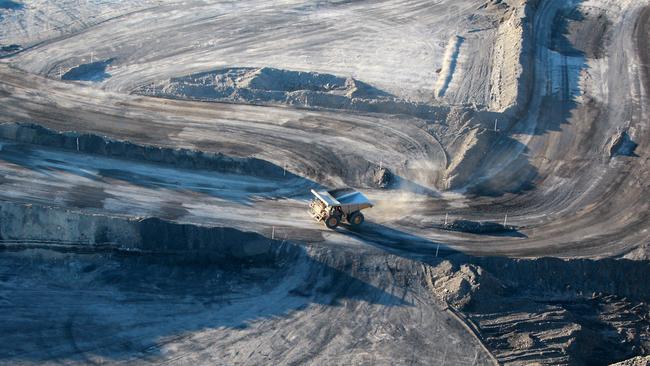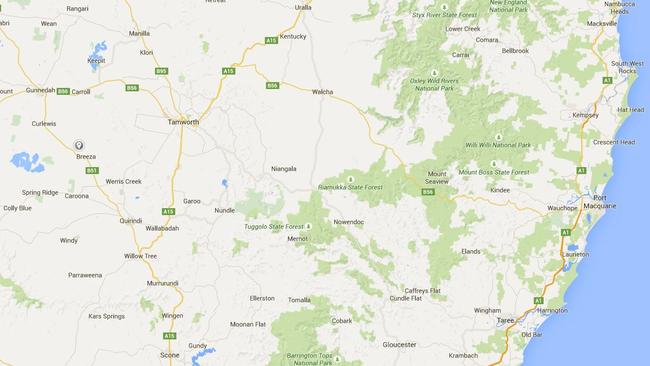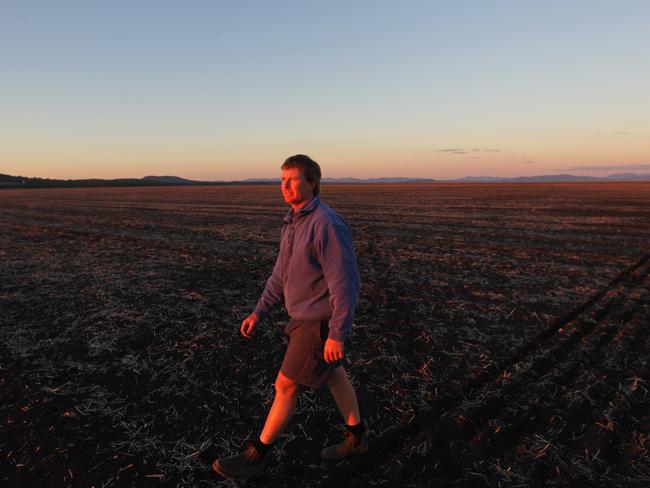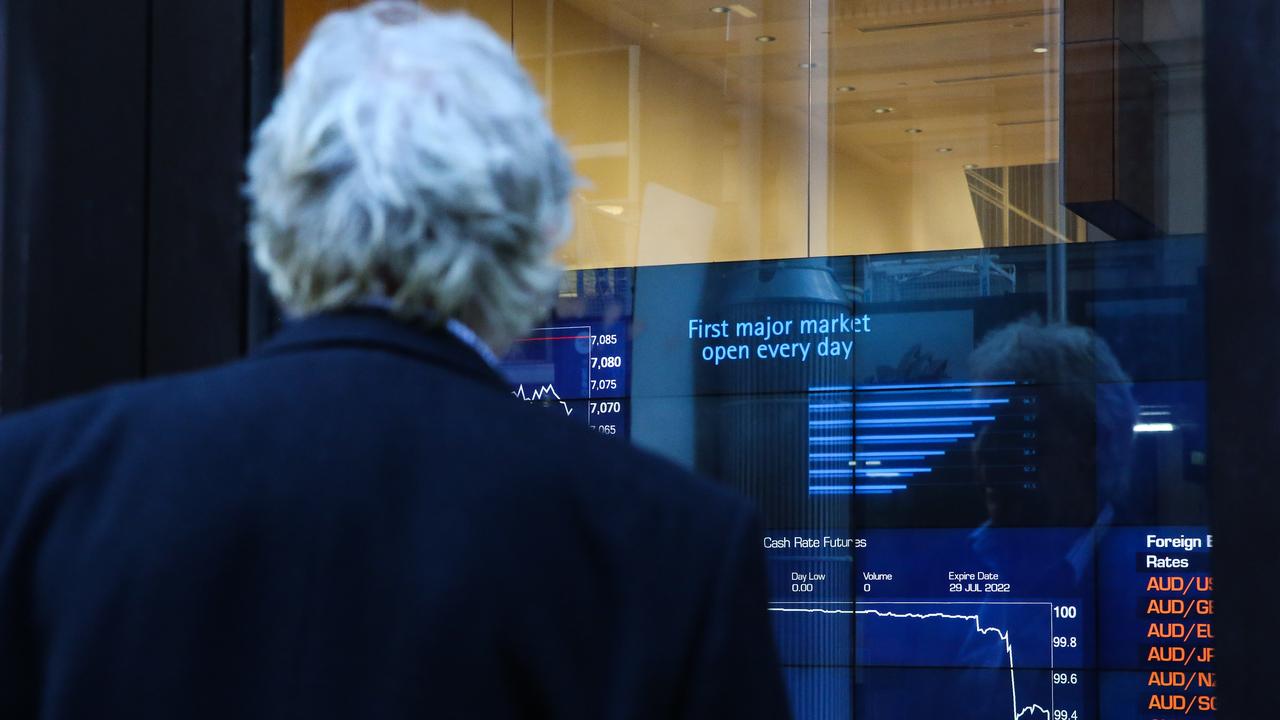The coal mine in NSW farmland that no one wants to claim responsibility for approving
IT’S a $1 billion project that will swallow up 4000 football fields’ worth of prime agricultural land. And despite angry protests, no one appears to be able to stop it.

Mining
Don't miss out on the headlines from Mining. Followed categories will be added to My News.
A BILLION dollar coal mine owned by a huge overseas company that is located in prime Australian farmland inched closer to reality this week — but no one wants to claim responsibility for approving it.
The latest victory for the proposed Shenhua Watermark coalmine happened on Saturday when it managed to secure federal government approval for its environmental assessment to build a $1 billion mine near Gunnedah in northern NSW. Once operational, it is expected to run 24 hours a day, seven days a week and will extract 10 million tonnes of coal a year for 30 years.
If is also expected to create up to 600 jobs.
Coalmines have rarely been popular with local communities but this one has been particularly controversial because it is situated in the Liverpool Plains, an area of sorghum and legume farms, which is often described as a food bowl for Australia.
The plans will see a large open-cut coalmine constructed across about 35sq km with three large extraction pits. NSW Farmers Association president Fiona Simson said an area the size of 4000 football fields would be disturbed.

Prime Minister Tony Abbott was careful to point out yesterday, that the mine was not situated on the fertile “black soil” that is seen as so valuable to agriculture in this region.
“It’s a mine in the hill country, it’s not a mine that is on prime agricultural land,” Mr Abbott said.
But one of the biggest concerns is whether it will impact on the availability of water.
Agriculture Minister Barnaby Joyce, who is also the member of Parliament for the area, has been vocal in his opposition to the mine, saying the “world had gone mad” after federal Environment Minister Greg Hunt gave the project conditional approval.
Defending his decision, Mr Hunt said the federal approval is “subject to 18 of the strictest conditions in Australian history”. It has also been subject to four expert reviews and two reviews by the Independent Expert Scientific Committee.
“There will be no impact on the availability of water for agriculture,” Mr Hunt said.
But Mr Joyce has not fallen in line on the issue and said this morning that he was suspicious of scientific advice that found no proof the mine would destroy the nearby water table.
“You can’t prove that you won’t either, you just can’t prove that you will,” he told ABC radio on Friday.
If nearby aquifers were destroyed (the closest is about 900m away), Mr Joyce said he didn’t know of a process in the world that could fix the damage. The aquifers are a vital source of underground water for farmers in the area.
IT WASN’T MY FAULT ...
Mr Joyce also pointed out that the federal government’s role was to assess the project on hydrology and whether it would have a damaging effect on the aquifers.
As there was no proof the aquifer would be destroyed, the government had no reason to stop the mine, and if it did, this could get challenged in court, he said.
He has also talked of his own powerlessness, insisting he has done “everything in my power to try and stop the mine”.
Mr Joyce has been strongly criticised for his seeming lack of influence despite being agriculture minister. Former local MP Tony Windsor said Mr Joyce had “done nothing in terms of this”, with his inaction prompting him to contemplate a return to federal politics.
Mr Joyce has also cast around for other parties to blame, suggesting that the decision was also the fault of the former NSW Labor Government. The former state government issued the mining exploration licence to Shenhua, something the company paid $300 million for and which started the assessment process.
“The fault of this goes right back to who gave the exploration licences and why and was further exacerbated by those who deemed it proper that it should proceed and continued on with the process,” Mr Joyce wrote on Facebook.
He has tried to distance the federal government even further from the decision by saying: “Our involvement federally was part of step 15 of 17 steps. There are still two further steps at the state level to go through.”
The announcement of the approval prompted Greens MP Jeremy Buckingham to tweet that Mr Joyce was “f***ing useless”.
The Prime Minister has downplayed the role of his government, saying this morning that it was just step 15 of “a long and at-times torturous” process.
Meanwhile, the issue has been handballed back to the NSW Government, which will have to decide whether to grant Shenhua a mining lease. Mr Joyce has indicated he would lobby NSW Premier Mike Baird to stop the mine.
But in a statement to news.com.au, a spokesman for NSW Resources Minister Anthony Roberts said approval of the mining lease was a “relative formality” now that it had been approved by the federal government.

“The project already has planning approval in NSW, and environmental approval by the Commonwealth was the last major hurdle,” the minister’s spokesman said.
He said that Shenhua had not yet applied for a mining lease application but once it did, it would be assessed by the NSW Division of Resources and Energy.
In a statement to news.com.au, the department said it “examines whether the applicant has a current development consent, its compliance record is satisfactory, it has the finances and technical capacity to carry out any proposed works, its reporting is up to date, sufficient security for site rehabilitation is held and whether the company fulfils the criteria for a fit and proper person.”
While Shenhua’s planning application was assessed by the independent NSW Planning Assessment Commission set up by the NSW Liberal government in 2008, the government also seems to have washed its hands of it, insisting that this decision was “independent”.
The minister’s spokesman said the project had been subject to one of the most extensive and independent assessment processes in the state’s history before receiving approval from the commission.
“We support the approval process, which is independent and conducted at arm’s length from the NSW Government,” the spokesman said.
“Five independent water experts concluded that the mine would not impact on the highly productive aquifers of the Liverpool Plains.
“Approval of the mining lease is a relative formality and legally cannot be refused except in very exceptional circumstances.
“In NSW, major projects are determined on their merits, not on their politics, and this will remain the case.”
WHAT HAPPENS NOW?
If the licence is approved the federal Environment Minister will assess “three comprehensive plans” before mining is allowed to start, including water and biodiversity management plans.
Another condition includes the power to stop work and stop mining if there are any effects on agricultural water supply, and if that occurs the mine must immediately provide an alternative water supply to farmers.
Shenhua Watermark is a subsidiary of Shenhua Goup, the largest coal supplier in the world. It has reportedly spent more than $700 million over eight years to try and get the project approved. It has paid about $300 million to the state government for an exploration licence, and about $203 million to buy 37 farms and about 15,000 hectares of land.
The company has also agreed to pay $200 million to the state government for a mining lease if it is granted.
Once approved, Shenhua will need to pump another $800 million into the construction of the mine and rail and other infrastructure.
Meanwhile, principal solicitor at Environmental Defenders Office NSW, Sue Higginson, said the NSW government’s approval for the mine in January was subject to proceedings in the Land and Environment Court.
The Greens accused the government of putting overseas mining interests ahead of local farmers and the climate.
Deputy Leader and mining spokeswoman, Senator Larissa Waters said climate consequences were not legally considered, and accused Mr Joyce of failing to protect the Liverpool Plains.
“With the coal price in structural decline, it’s economically insane to be sacrificing valuable farming land for the dying coal industry, especially when we have viable renewable energy alternatives,” she said.
Originally published as The coal mine in NSW farmland that no one wants to claim responsibility for approving


